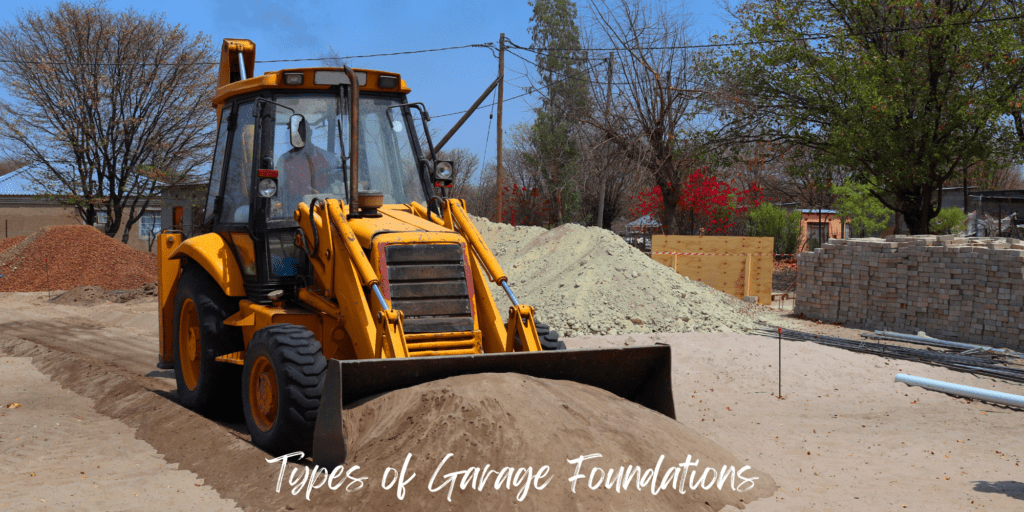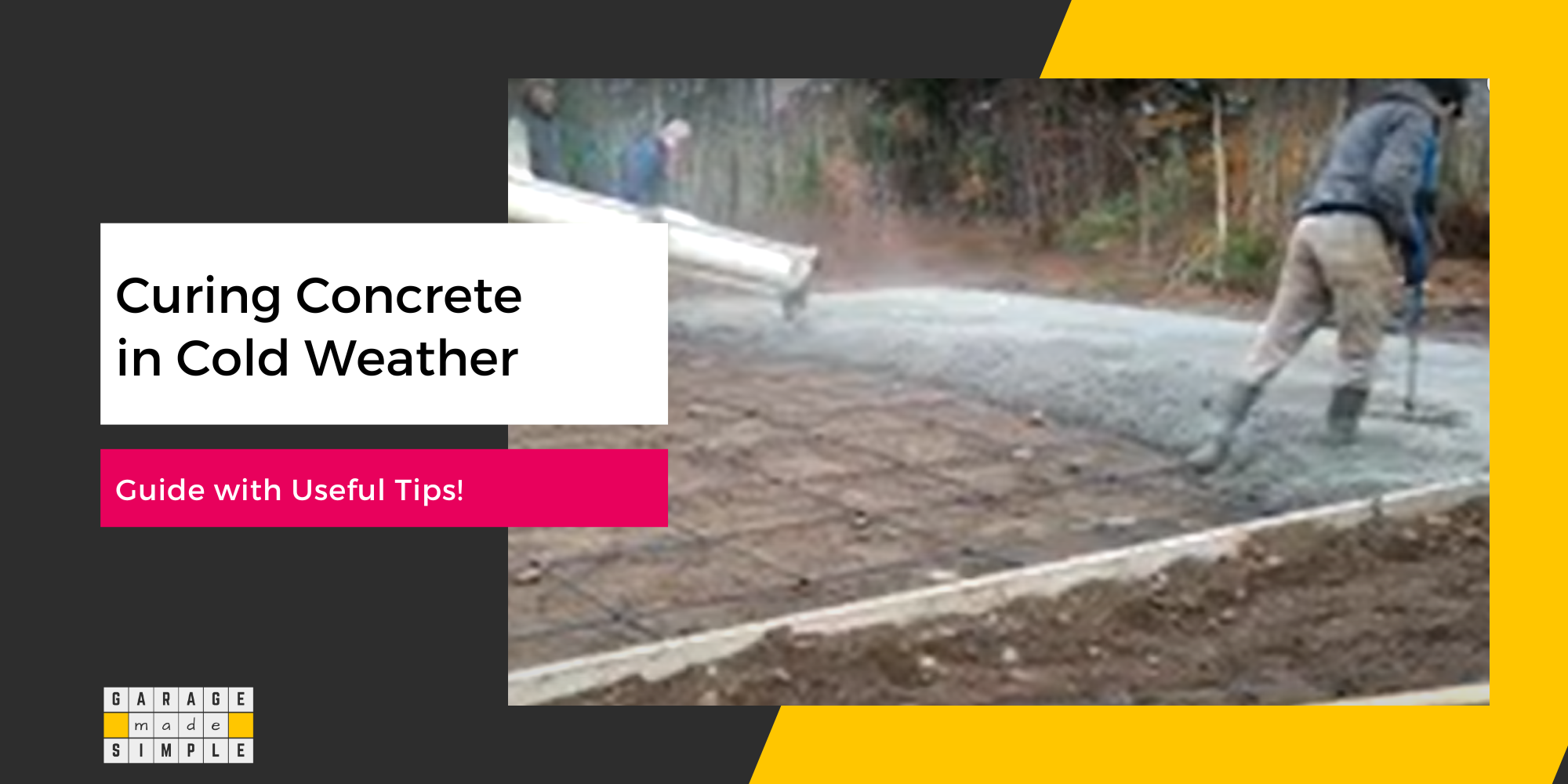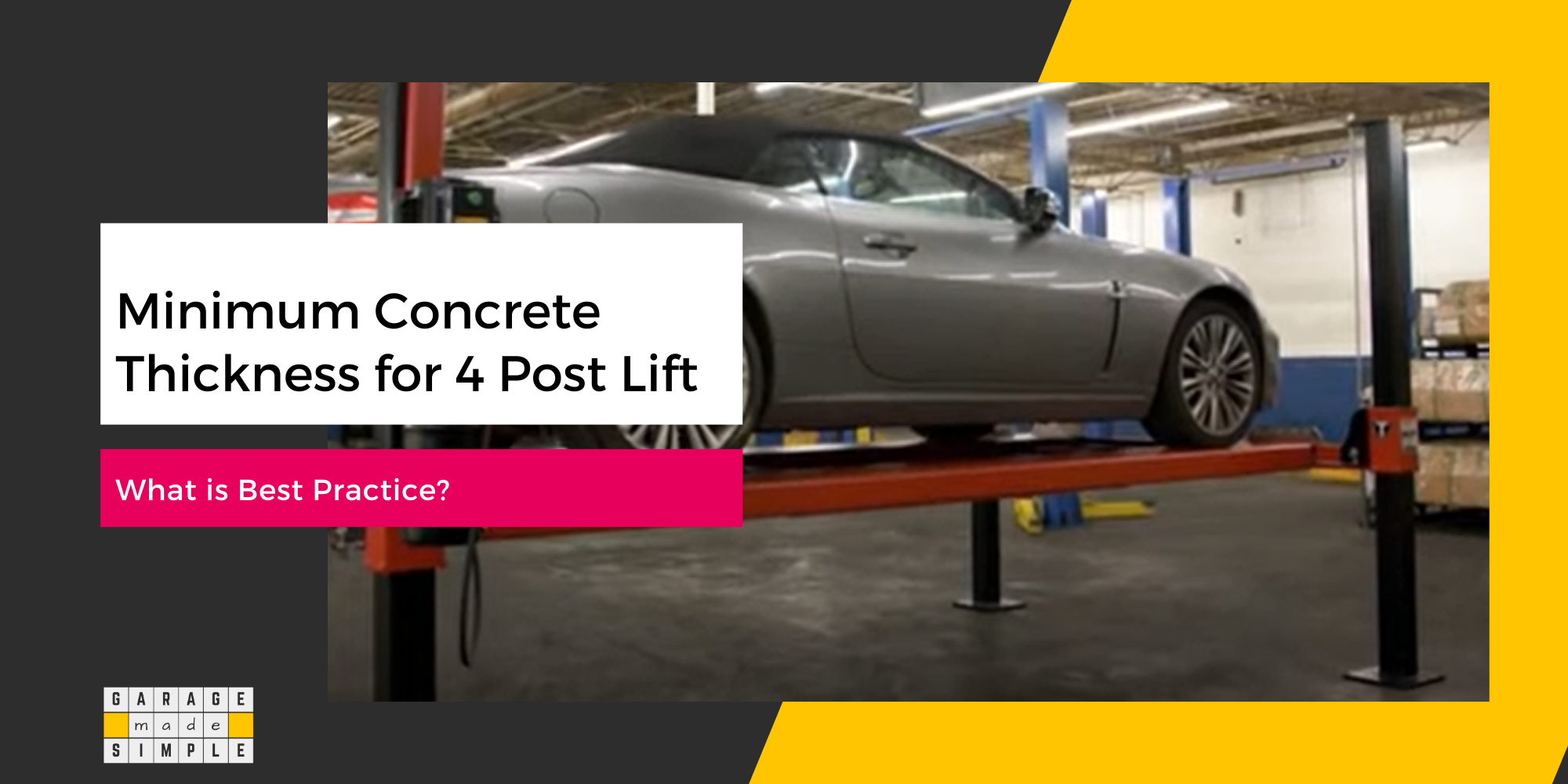8 Types of Garage Foundations: Which is Best for You?
garagemadesimple.com is a participant in the Amazon Services LLC Associates Program, an affiliate advertising program designed to provide a means for sites to earn advertising fees by advertising and linking to Amazon.com . The website is also an affiliate of a few other brands.
When you look at a detached garage, the roof, walls and the garage door catch your immediate attention. However, this entire superstructure sits on a slab, foundation and possibly footings.
There are several types of garage foundations, but whatever the type, its ultimate objective is to provide a stable support to the garage superstructure and transfer both dead and live loads uniformly to the grade below.

In essence the garage foundation is an essential part of any garage construction project as it provides stability, support, and durability to the structure.
Among the different types of garage foundations, the one that will work best for you depends on various factors, as under.
Types of Garage Foundations: Which is Right for You?
The key factors that influence the choice of foundation are:
Climate
The climate of the area where the garage is being built is an important factor to consider when choosing a foundation. Areas with high rainfall or snowfall require foundations that can withstand ground movement and frost heave.
Topography
The topography of the terrain and the soil composition of the grade on which the garage will be built has a significant influence on the choice of foundation.
For example, areas with expansive soil or seismic activity require foundations that can resist settling or shifting. Terrain that is sloping will need a different type of garage foundation.
Usage Plans
The intended use of the garage will also affect the choice of foundation. Not all garages are designed to just park cars.
Garages that will be used for heavy vehicles such as SUVs or RVs will require stronger foundations. A garage with a car lift or a workshop with some heavy presses will require a different type of garage foundation.
Garage Size
The size and design of the garage will also influence the choice of the garage foundation. Obviously, a single car garage may not even need a foundation.
On the other hand, larger garages, possibly with an upper floor will require stronger foundations. In fact the foundations will need to be as good as those for a house.
Types of Garage Foundations
There are several types of garage foundations. Of these the first two are most popular and are widely used. The next three may be used in special terrains or situations. The others are not commonly used.
1. Poured Concrete Slab
A poured concrete slab, also known as slab-on-grade foundation, is possibly the most popular and cost-effective option among the different types of garage foundations.
Slab-on-grade construction is when a concrete floor is poured directly on a grade (ground). It provides the foundation for the building and does not include a basement or crawlspace.

The slab-on-grade involves pouring a thick layer of concrete mix directly onto a well prepared soil support system (aka base). The slab-on-grade foundation serves both as the foundation and the garage floor.
A slab-on-grade foundation can be a floating garage slab that is suitable for small garages with very light loads. For medium size garages with moderate loads it is better to go for a monolithic garage slab.
Advantages
- Affordable: Poured concrete slab foundations are one of the most cost-effective options for garage foundations.
- Durable: Properly constructed poured concrete slab foundations can last for decades without requiring significant maintenance.
- Easy to construct: Poured concrete slab foundations are relatively easy to construct, making them a popular choice for DIY projects.
Disadvantages
- May not be suitable for areas with high moisture content or frost heave: Poured concrete slab foundations can crack or shift over time in areas with high moisture content or frost heave.
- Not as strong as other types of foundations: Poured concrete slab foundations are not as strong as other types of foundations, such as T-shaped foundations or pier and beam foundations.
2. T-shaped Foundation
A T-shaped foundation is possibly the second most popular when it comes to commonly used types of garage foundations.
The T-shaped foundation is commonly used for larger garages or those with multiple stories. It consists of a footing that extends below the frost line and a stem wall that rises above the ground level.
Advantages
- Strong and stable: T-shaped foundations are very strong and stable, making them a good choice for larger garages or those with multiple stories.
- Resistant to frost heave: T-shaped foundations are resistant to frost heave, which is a common problem in areas with cold climates.
Disadvantages
- More expensive and time-consuming to construct: T-shaped foundations are more expensive and time-consuming to construct than poured concrete slab foundations.
3. Pier and Beam Foundation
A pier and beam foundation is typically used in areas with expansive soil or high water tables. It consists of a series of concrete piers that support wooden beams, which in turn support the garage structure.
Advantages
- Resistant to settling and shifting: Pier and beam foundations are very resistant to settling and shifting, making them a good choice for areas with expansive soil or high water tables.
- Flexible in accommodating uneven terrain: Pier and beam foundations can be adjusted to accommodate uneven terrain, making them a good choice for challenging building sites.
Disadvantages
- More expensive and time-consuming to construct: Pier and beam foundations are more expensive and time-consuming to construct than poured concrete slab foundations.
4. Pile (aka Raised) Foundation
A pile foundation, also known as a raised foundation, is preferred in areas with poor soil conditions or high water tables. It consists of a series of concrete or steel piles that are driven deep into the ground to support the garage structure.
Advantages
- Strong and stable: Pile foundations are very strong and stable, making them a good choice for areas with poor soil conditions or high water tables.
- Able to support heavy loads: Pile foundations can support heavy loads, making them a good choice for larger garages or those with multiple stories.
Disadvantages
- Most expensive and time-consuming to construct: Pile foundations are the most expensive and time-consuming type of garage foundation to construct.
5. Frost-Protected Shallow Foundation (FPSF)
A frost-protected shallow foundation (FPSF) is the “go to” garage foundation for extremely cold climates. It is a shallow concrete footing that is insulated from the cold ground by a layer of rigid foam insulation.
Advantages
- Resists frost heave
- Cost-effective
Disadvantages
- May not be suitable for areas with high moisture content or poor drainage
6. Concrete Masonry Units (CMU) Foundation
Concrete masonry units (CMU) foundations can also be used for garage construction. The foundation is made of concrete blocks that are stacked and filled with concrete grout.
Advantages
- Strong and durable
- Resistant to moisture, fire, and pests
- Low maintenance
Disadvantages
- Time-consuming to build
- Not the most cost-effective option for smaller garages
7. Gravel Foundation
Gravel foundations are a cost-effective and straightforward solution for garage construction. They consist of a layer of compacted gravel that is spread evenly on the prepared ground surface.
Advantages
- Affordable
- Good drainage
Disadvantages
- Not suitable for areas with poor soil drainage
- Lacks the structural strength of concrete foundations
8. Wood Foundation
Wood foundations are a traditional approach to garage construction. They are made of pressure-treated wood beams and posts that are arranged to form a framework.
Advantages
- Versatile and easy to construct
- Suitable for regions with fluctuating temperatures
Disadvantages
- Requires meticulous waterproofing and proper ventilation
- Regular maintenance is essential
- May not be ideal for areas prone to termites or heavy moisture
Thank you very much for reading the post. I do hope you found it informative and useful.






